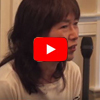Book Club: Mindfulness and Creativity
Blog / Produced by The High Calling
I need to prepare a sermon for a class on preaching I’m taking so I go to the grocery and buy some red beans. I am craving red beans and rice—some New Orleans comfort food—and I want it now, so I do the quick soak to break down the hard shell of the beans and start chopping my veggies. I let the oil heat in a saucepan as I stack onion pieces in the food processor and chop to just the right consistency. When the oil is hot, I throw the onion in with the bell pepper and celery—what my husband calls the holy trinity of Cajun cooking.
I sauté, let the flavors mingle, and savor the beauty in the pan as the three become translucent—these separate ingredients become one. I drop in some cayenne, bay leaves, thyme, parsley, garlic…each addition bringing the recipe closer to completion. As I cook, my mind relaxes and thoughts flow free.
I am writing my sermon.
I could sit down in front of my computer, read my focal scripture over and over, let the blank screen permeate my mind…this would be a common approach to writing. In fact, I tried this and it just did not work. When I abandon this effort and listen to that voice in my mind that says, “red beans and rice” over and over—I am letting intuition lead the process.
Those who can free themselves of old mindsets…who can open themselves to new information and surprise, play with perspective and context, and focus on process rather than outcome are likely to be creative, whether they are scientists, artists, or cooks.
In chapter seven, Creative Uncertainty, of the book Mindfulness, Ellen J. Langer tells us, Many, if not all, of the qualities that make up a mindful attitude are characteristic of creative people.
One such quality, Langer says, is the willingness to follow intuition. Langer defines intuition as an attunement to information not perceived by most conscious minds. In a sense, intuition is the opposite of rational thought. When we use logic, we are assigning categories to our world—creating a static view of the world and things in it. Intuition accepts that the world is constantly changing and opens our thoughts to new possibilities. Langer uses the example of a photography lecture she attended in which the speaker discussed the differing mindsets of amateur and experienced photographers in their approach to photographing the Grand Canyon.
…Arriving at the rim of this famous landmark, they [amateurs]shuffle about, searching for a sign that says “shoot here.” With one pre-set image labeled GRAND CANYON in their minds, blinding them to what lies below, they search for the one and only “right” spot to stand. In advising his audience that there is no such spot and that they could search instead for whatever was “meaningful” to them, Meyerowitz [the speaker]was encouraging a mindful approach applicable to far more than photography…By keeping free of mindsets, even for a moment, we may be open to see clearly and deeply.
Another quality that encourages mindfulness—and thus creativity—says Langer, is the teaching of facts in a conditional manner. Langer discusses several studies she conducted in which individuals or groups were given information in absolute terms verses conditional terms. Those given the information in absolute or unconditional terms were less creative in using the information. If, for example, I had been taught that the only way to write is to sit down and do it, then I may not have been open to the process of making red beans that relaxed my creative mind and then later allowed me to “sit down and do it” with less effort and angst.
Langer also discusses how seeing differences (making distinctions) and similarities (making analogies) among things can also promote creative thinking.
If we look carefully at all these qualities of the creative person, we see that what they actually involve is the ability to transcend context, which is something we have been discussing throughout our study of mindful thinking. If I believed, for example, that the only context for the writing life was the actual sitting down and doing the writing instead of a whole cluster of life experiences…well, that sermon may never have gotten written. Not as well, anyway.
The ability to transcend context is the essence of mindfulness and central to creativity in any field, Langer says.
Next week we’ll be discussing chapter eight--Mindfulness on the Job--of Ellen J. Langer's book Mindfulness. If you’d like to join the discussion, leave a comment or link up below with a post at your blog.
Image by Claire Burge. Used with permission. Post by Laura J. Boggess.





